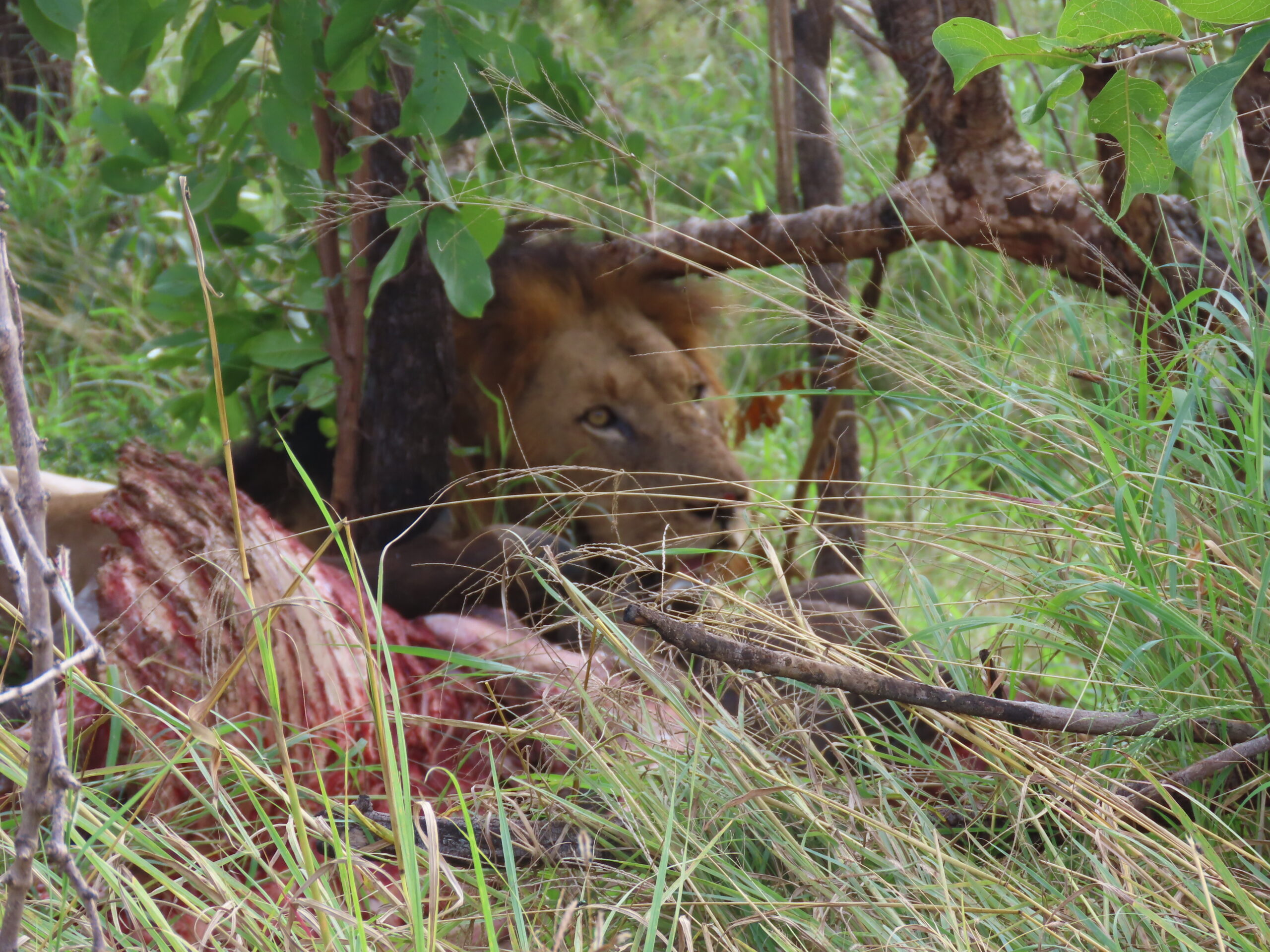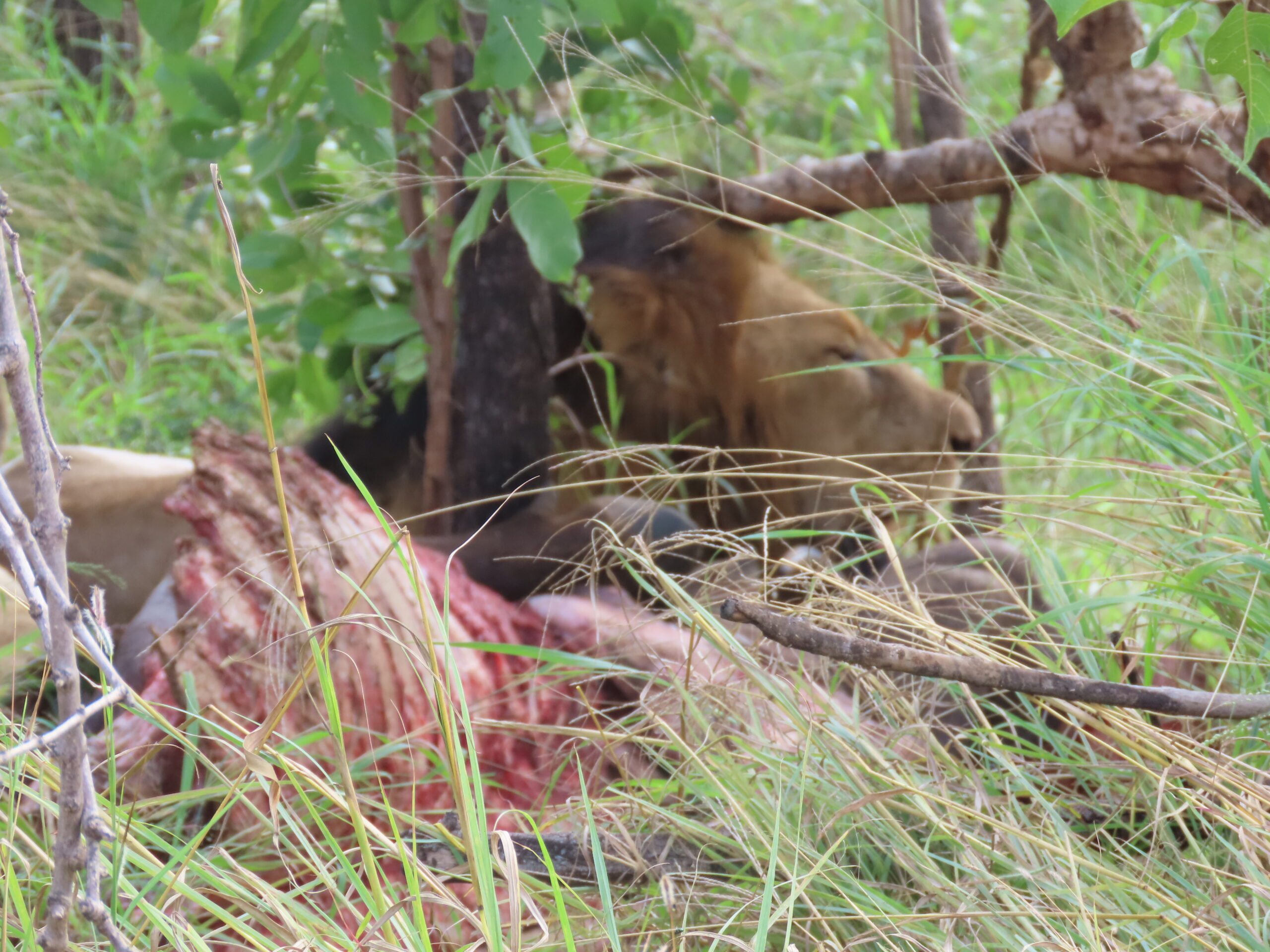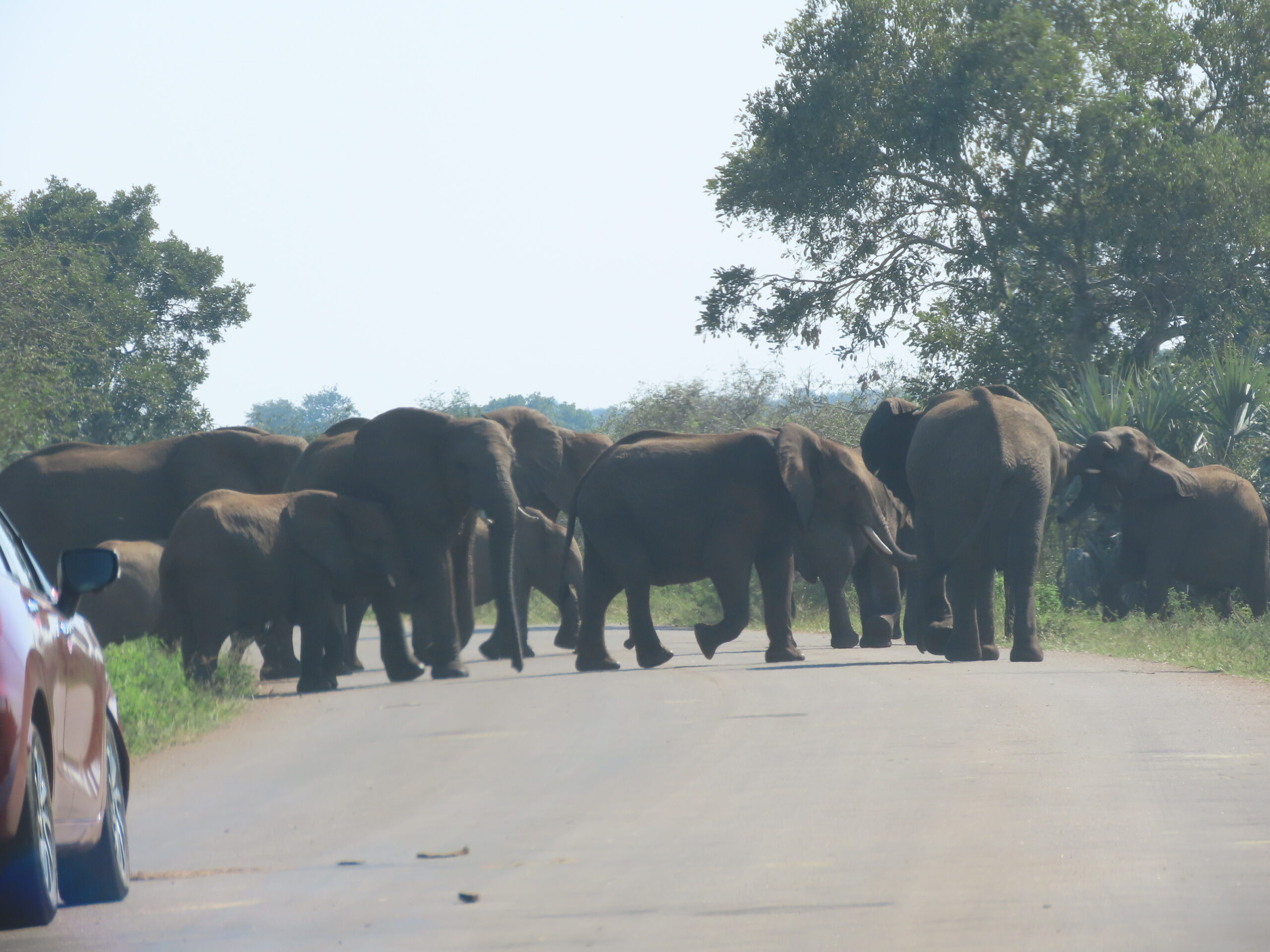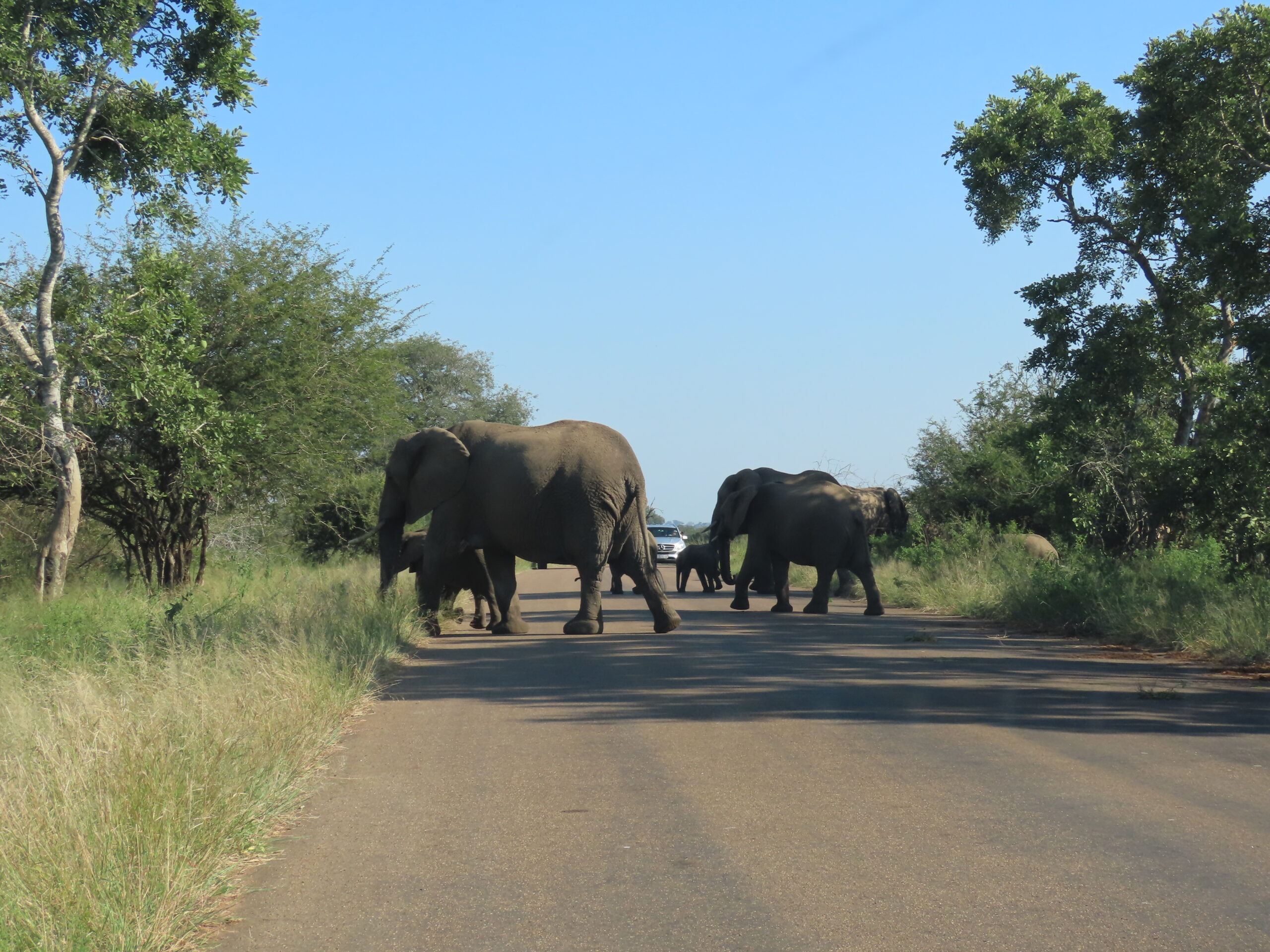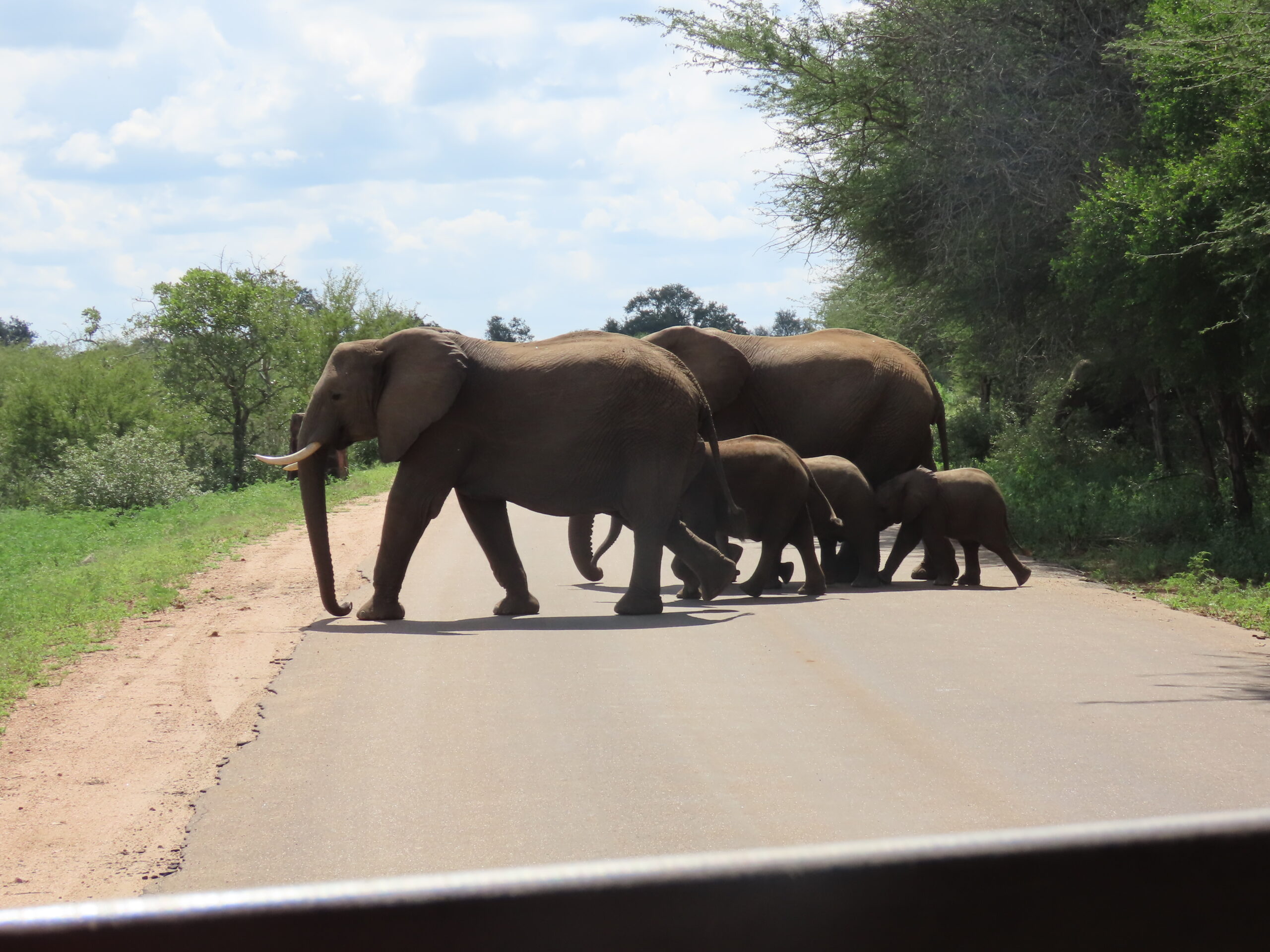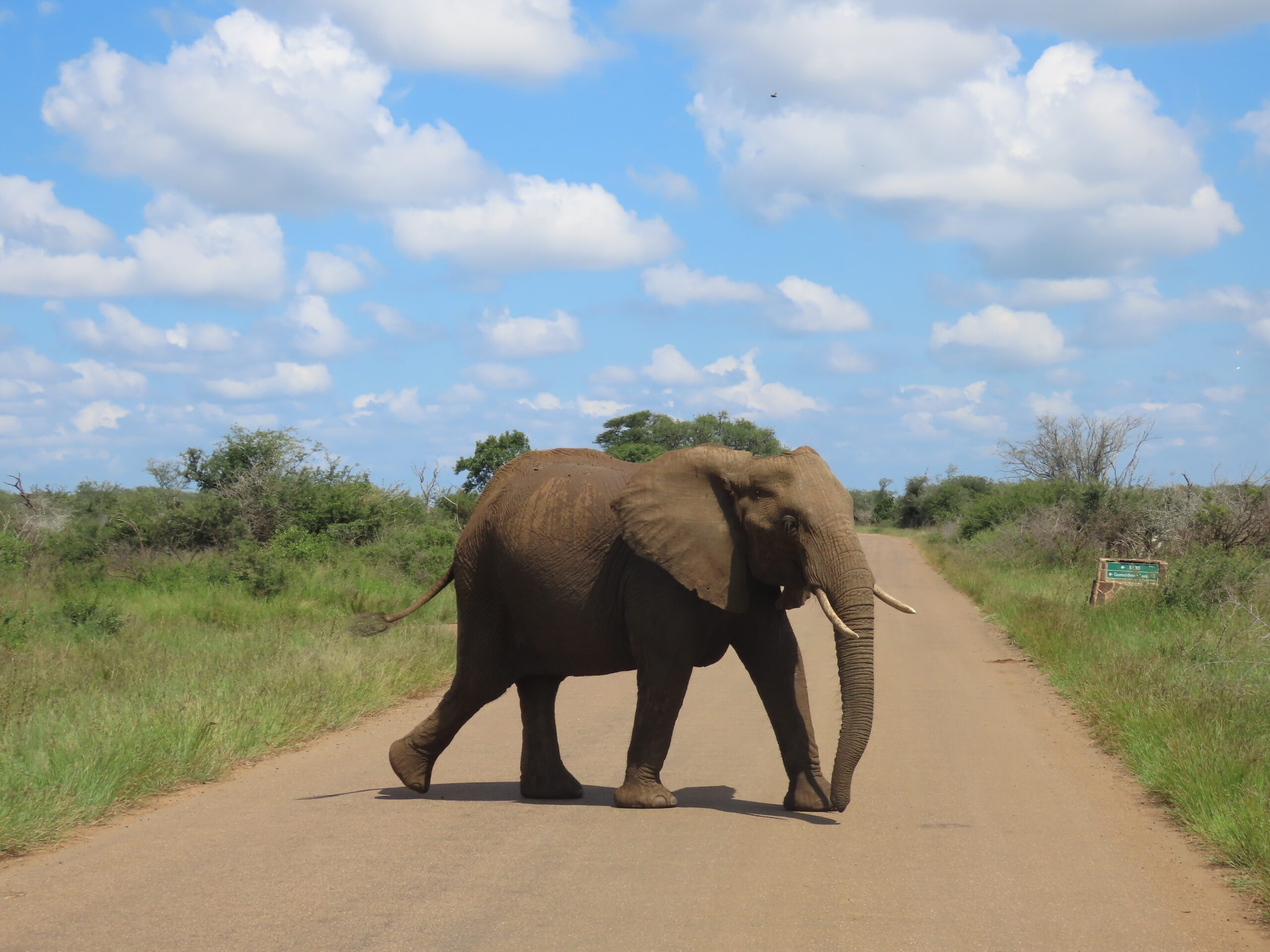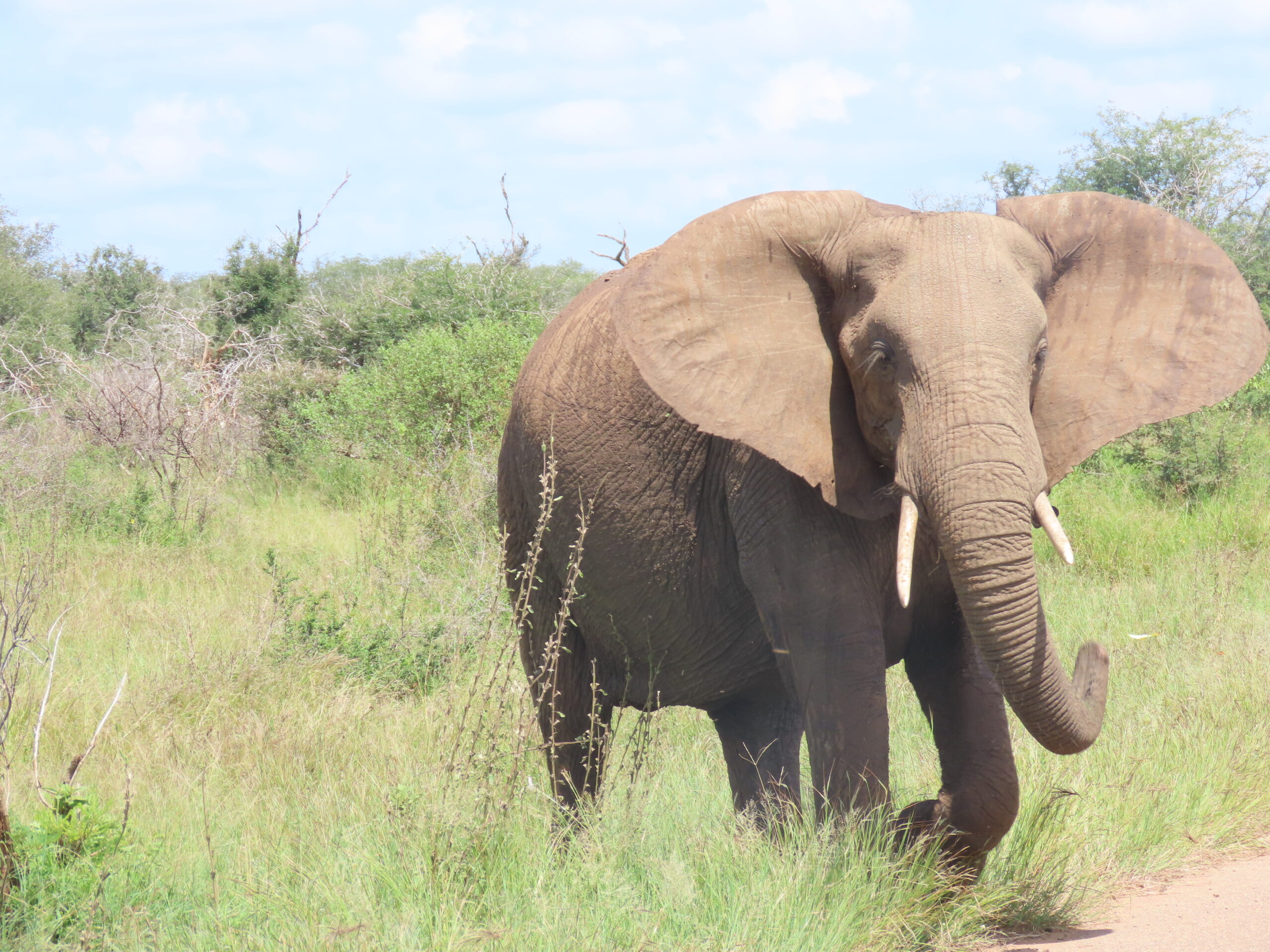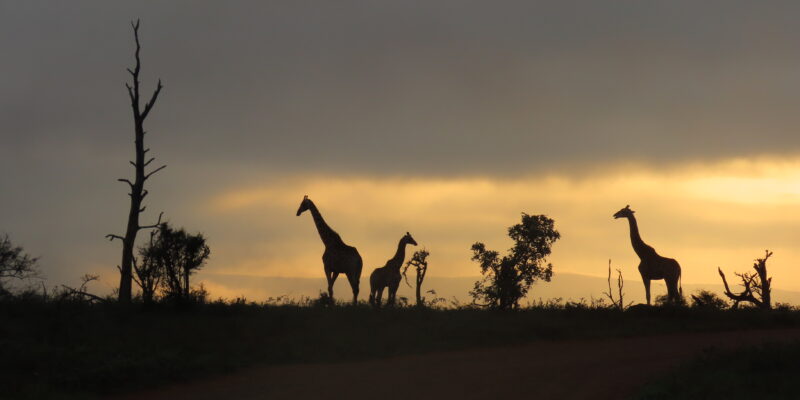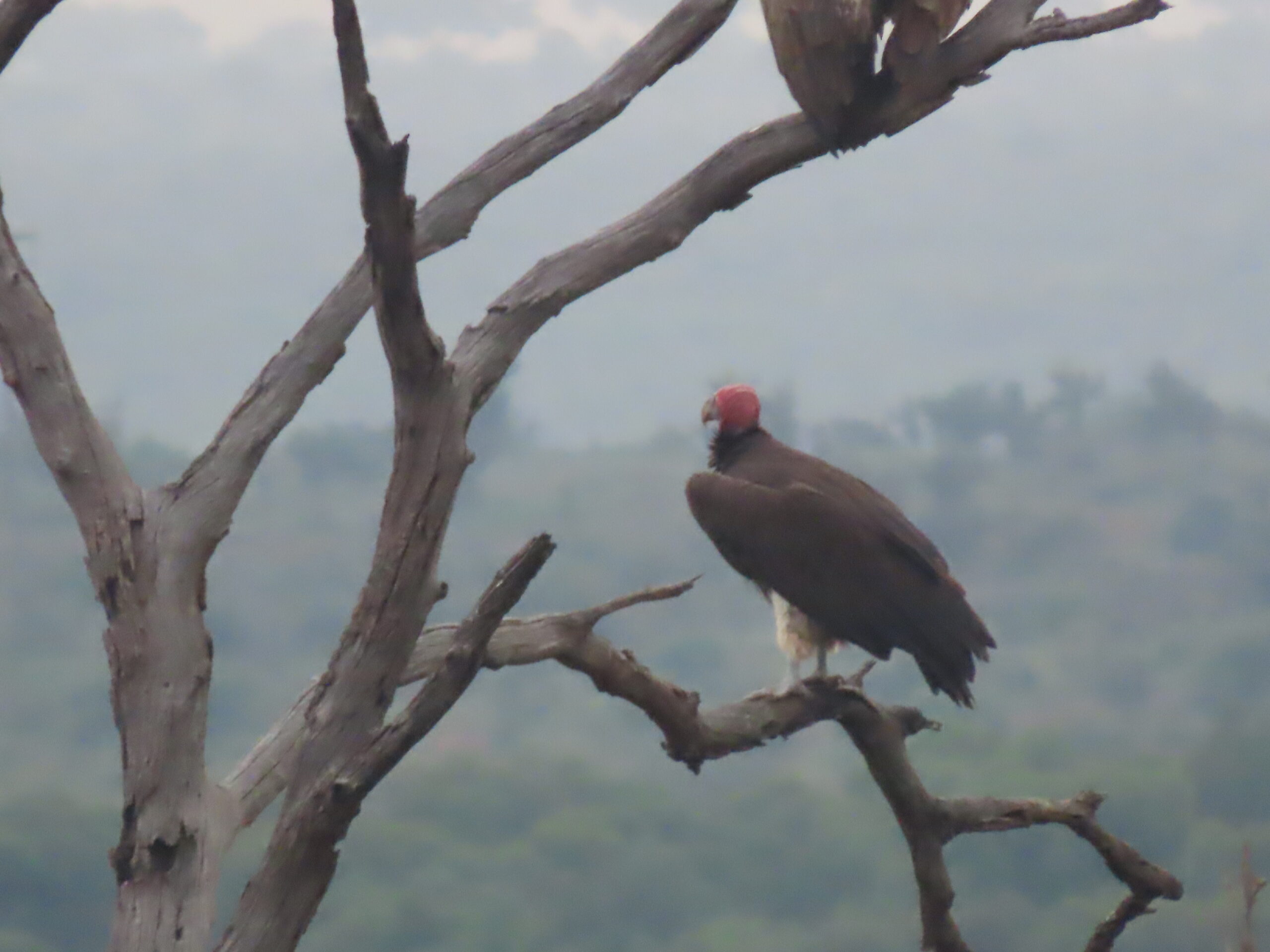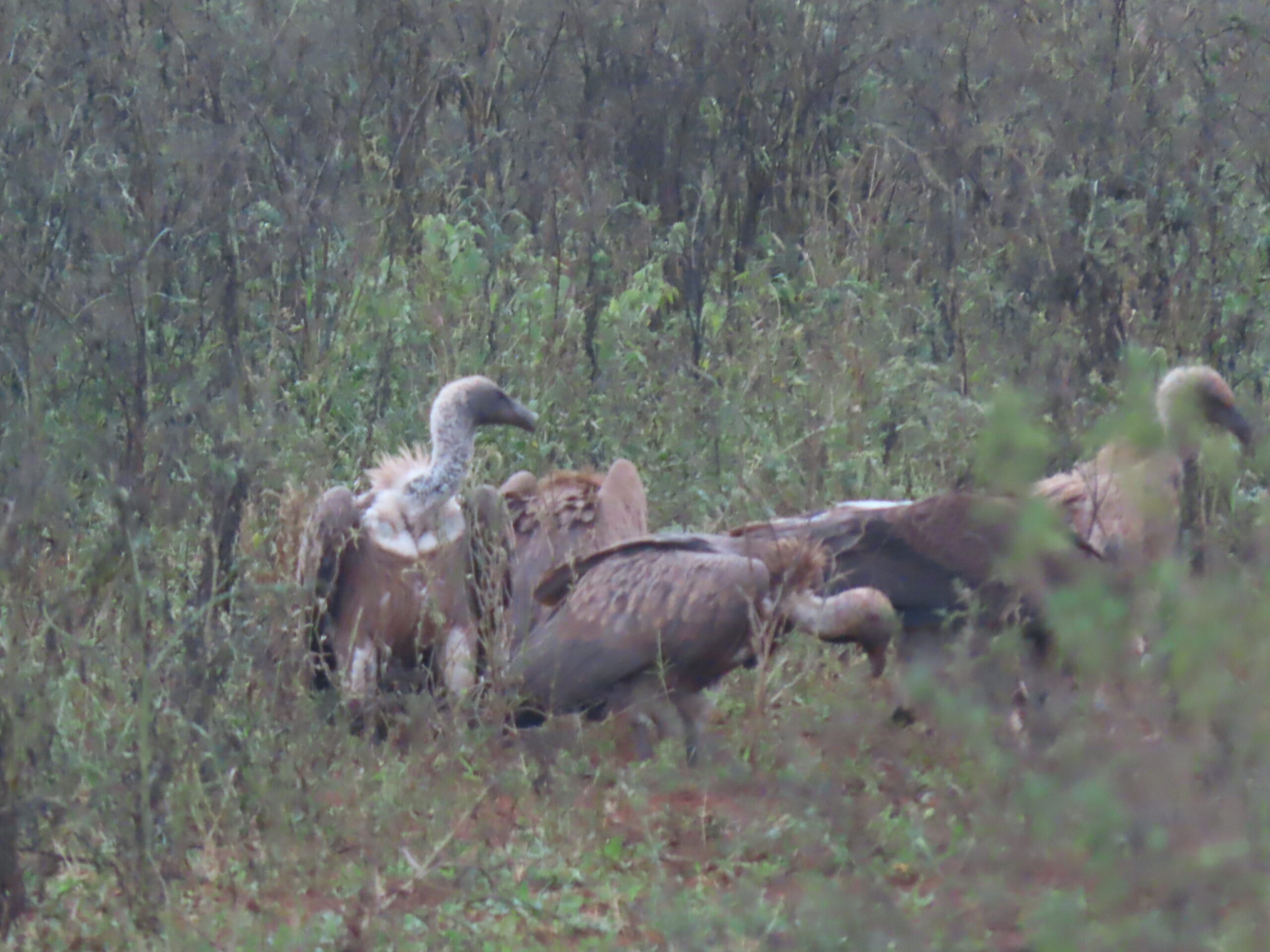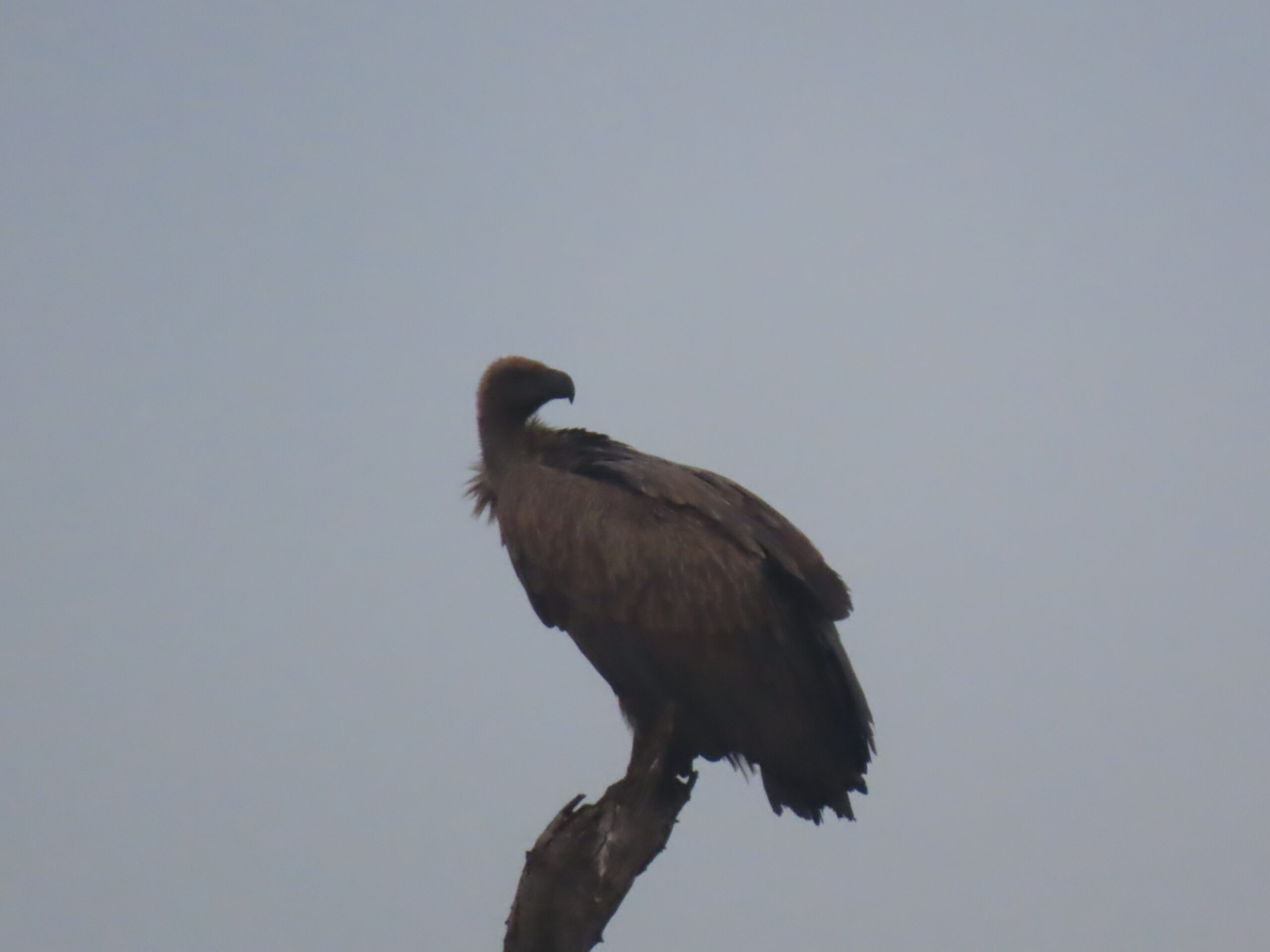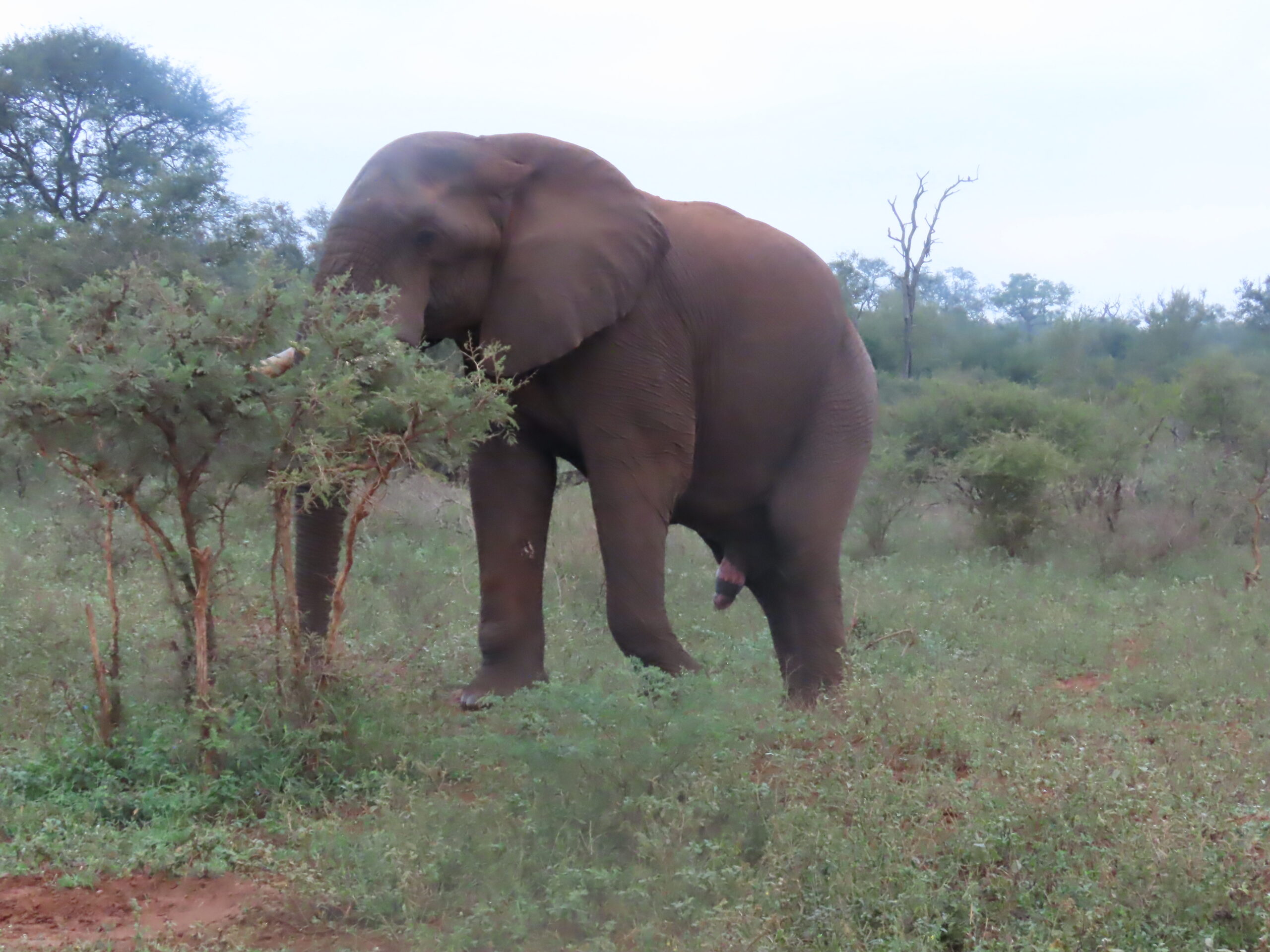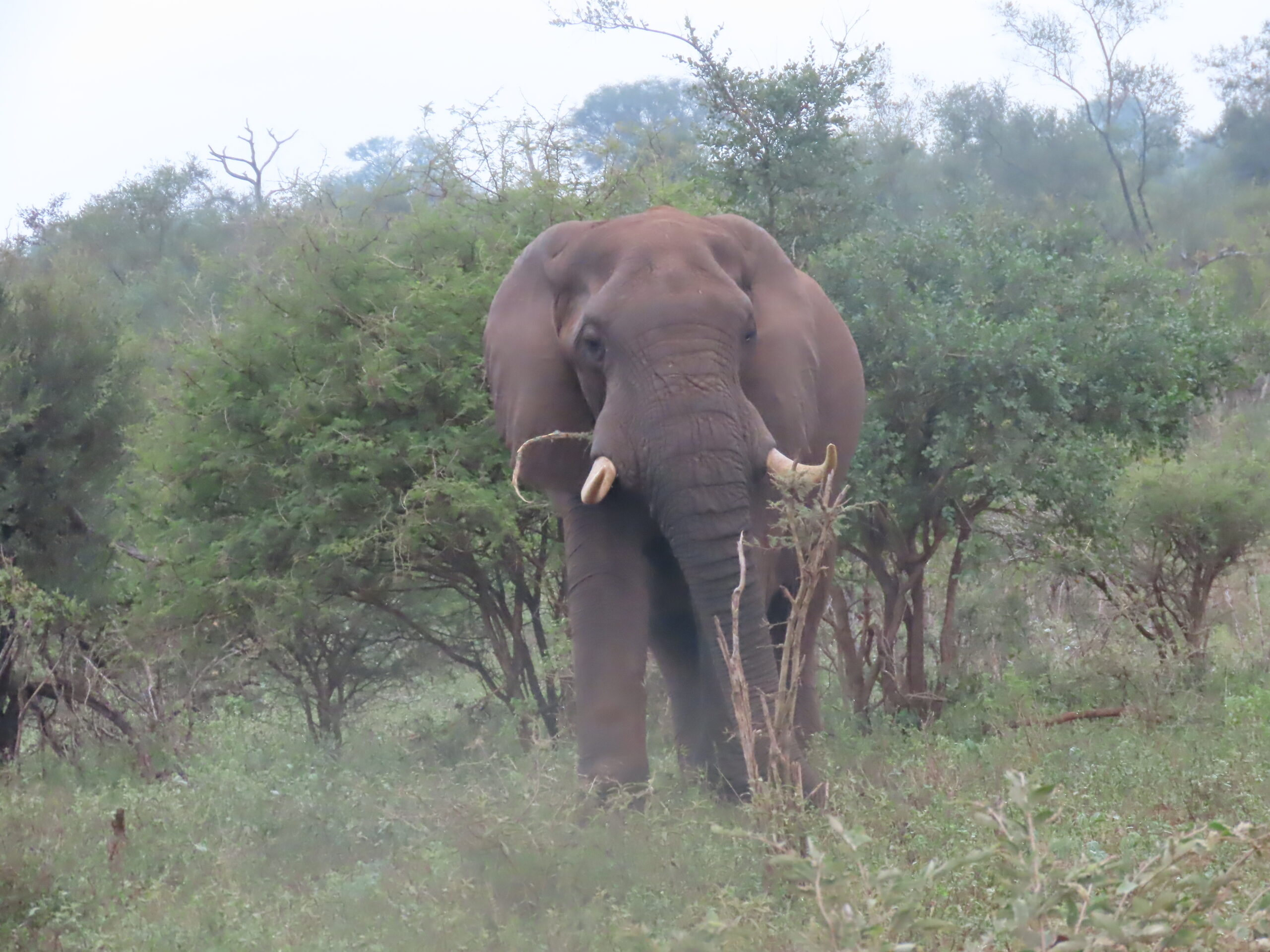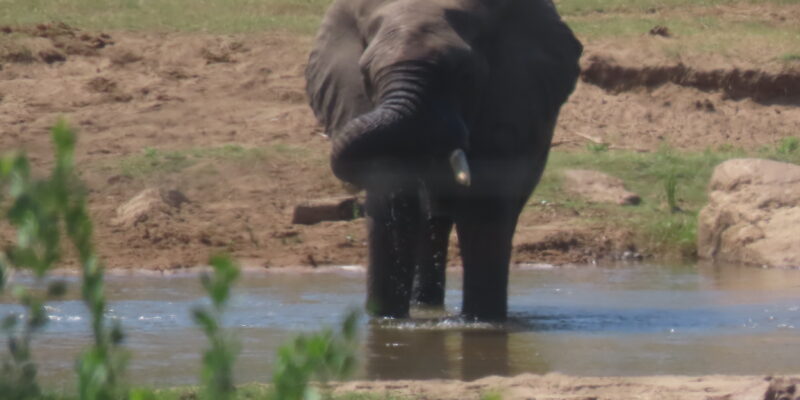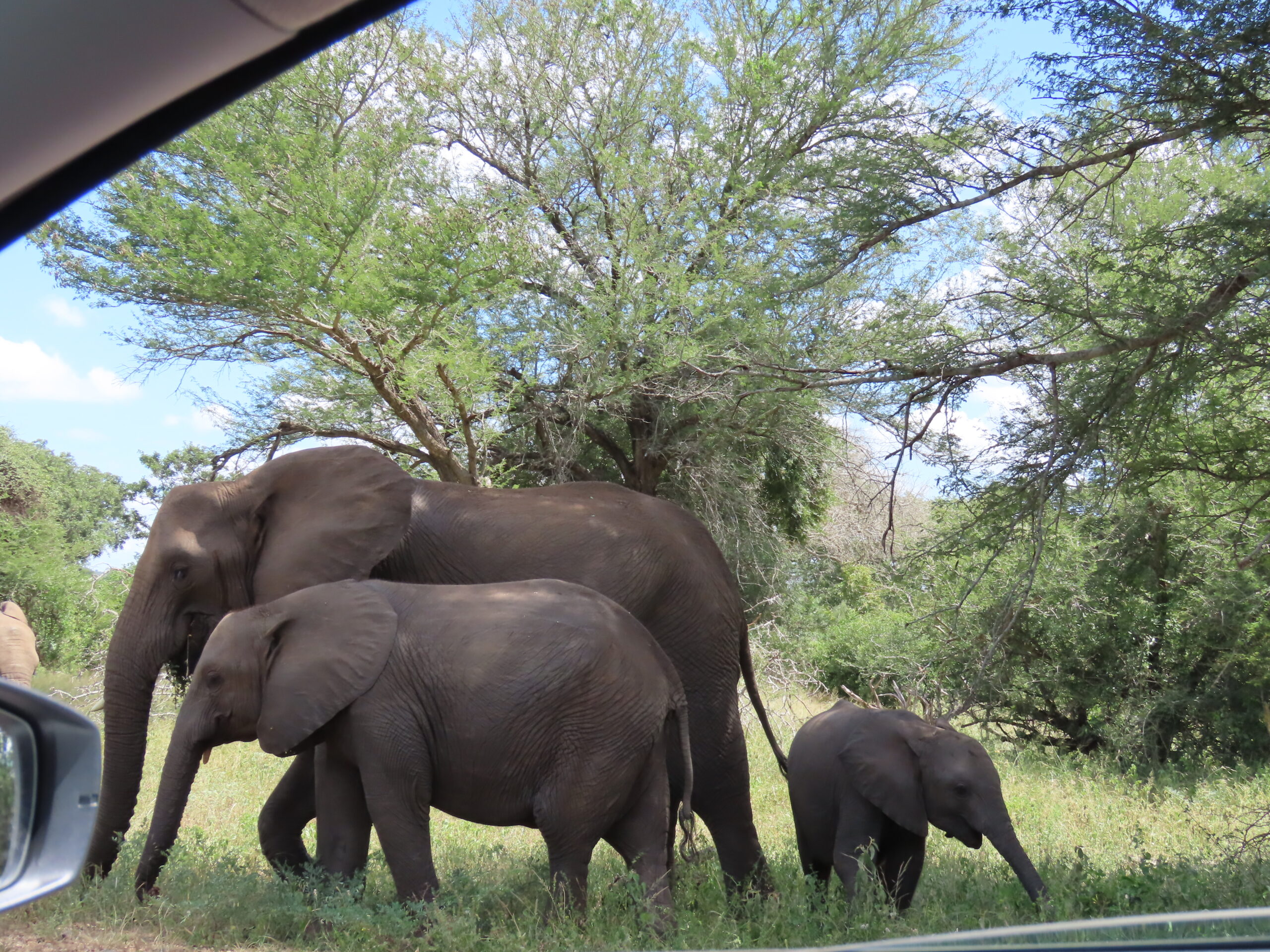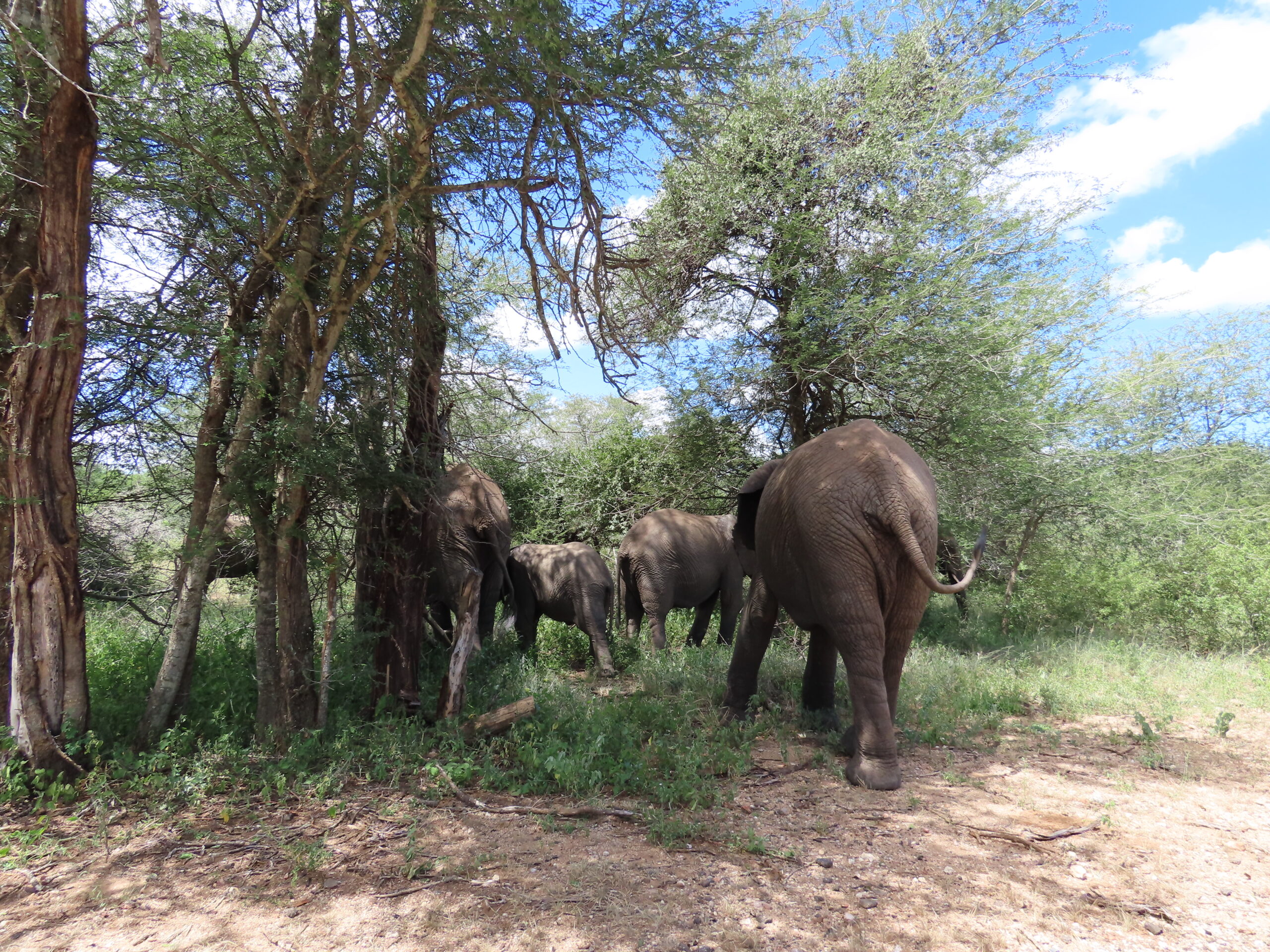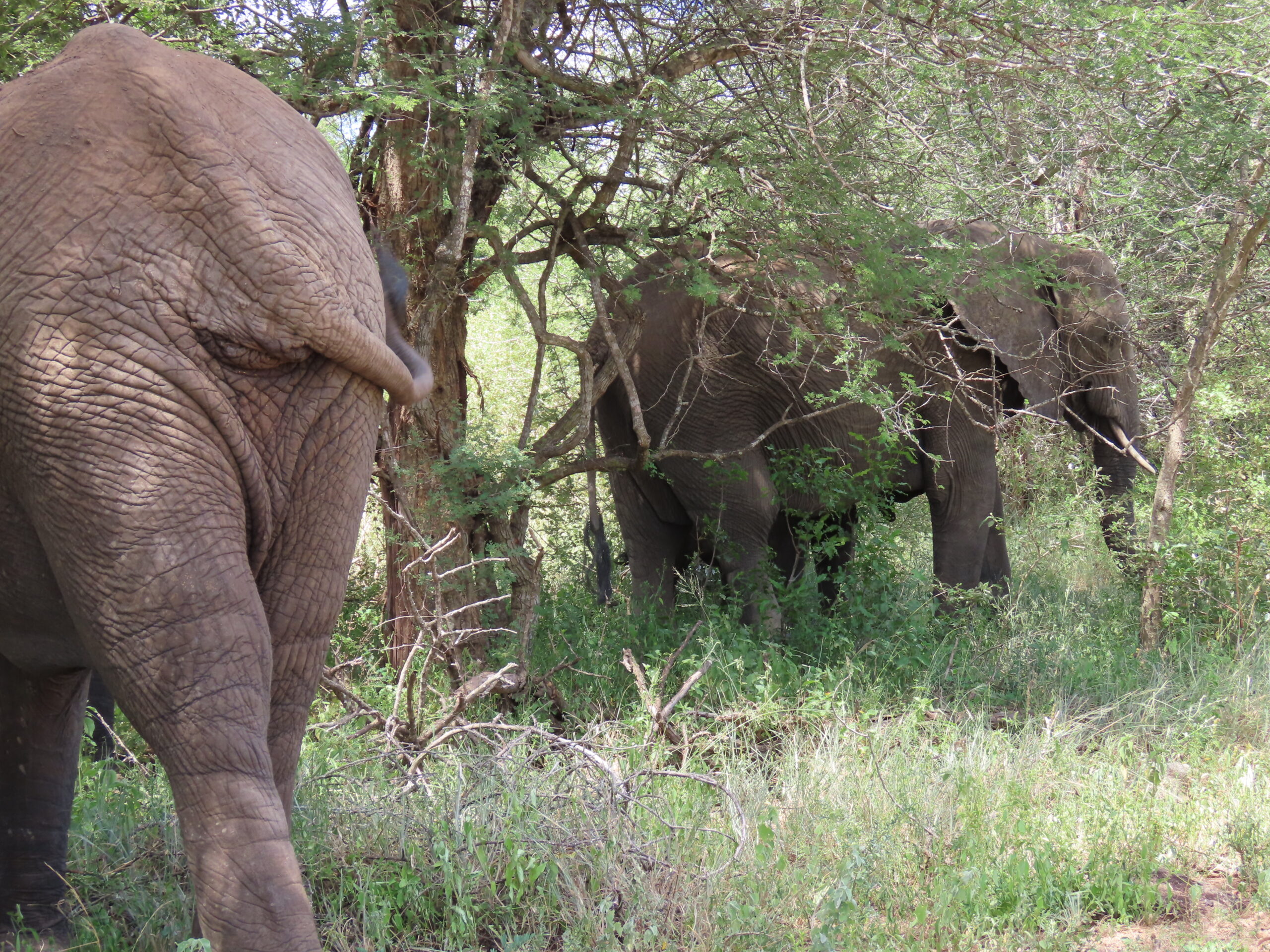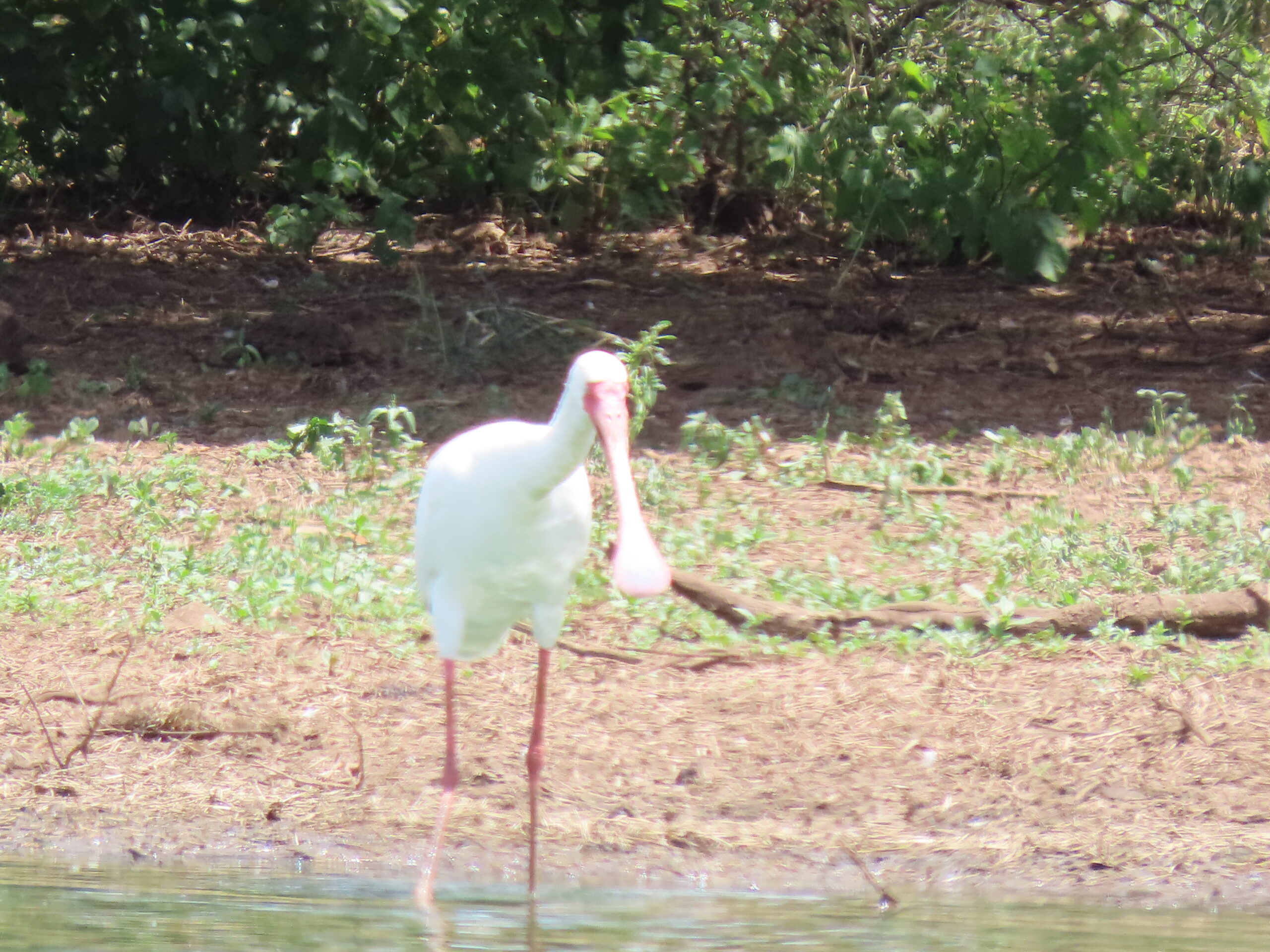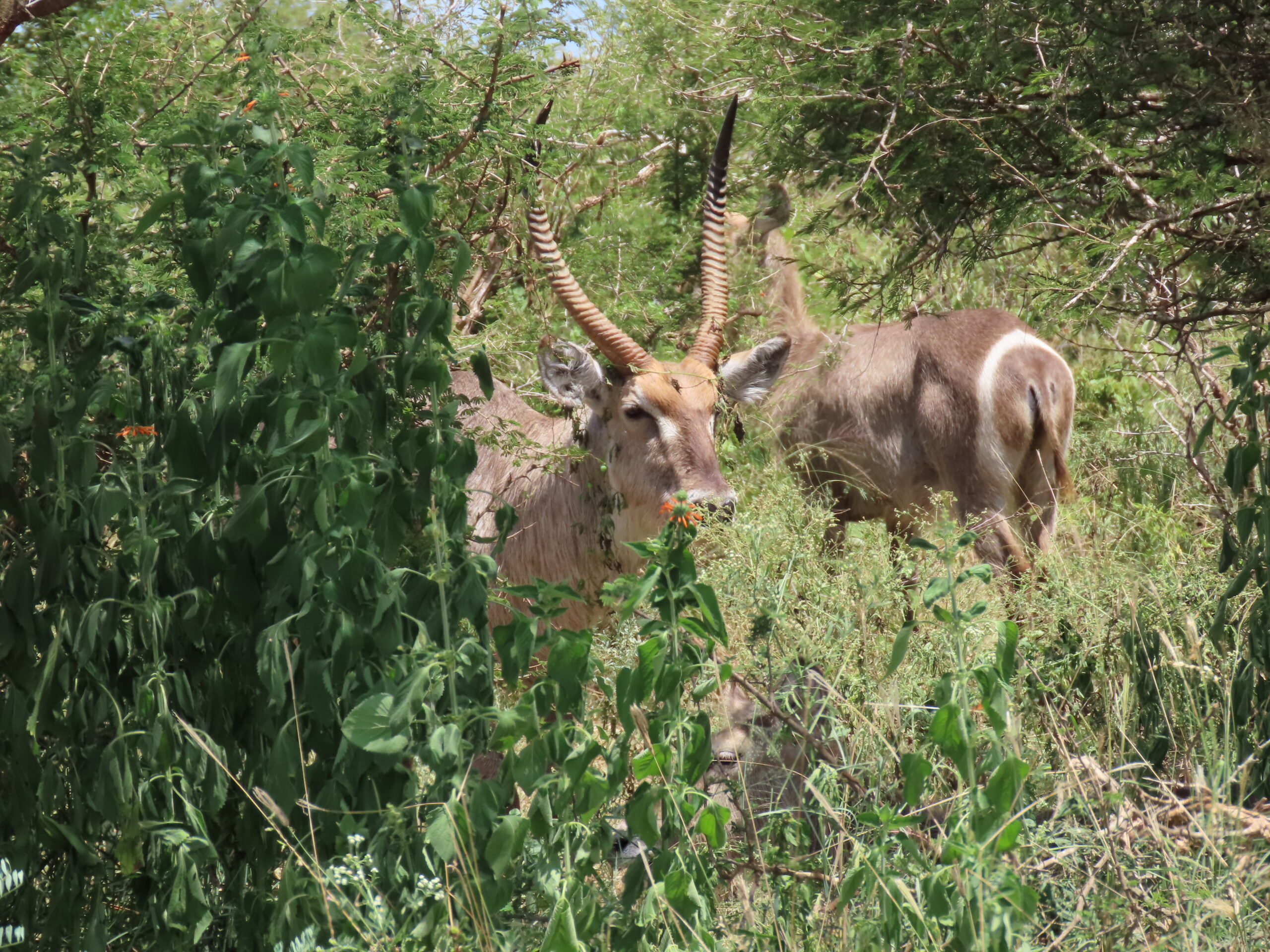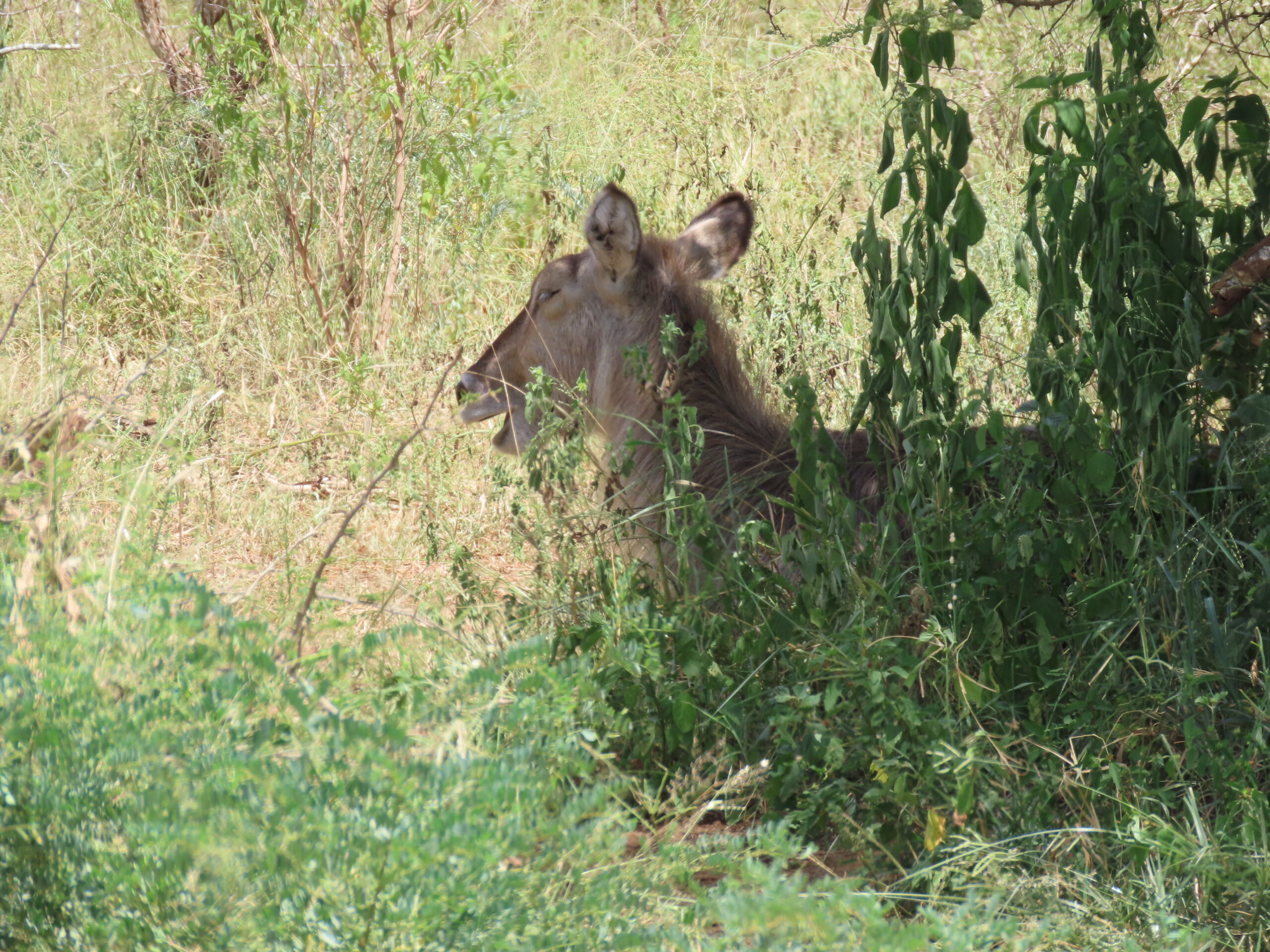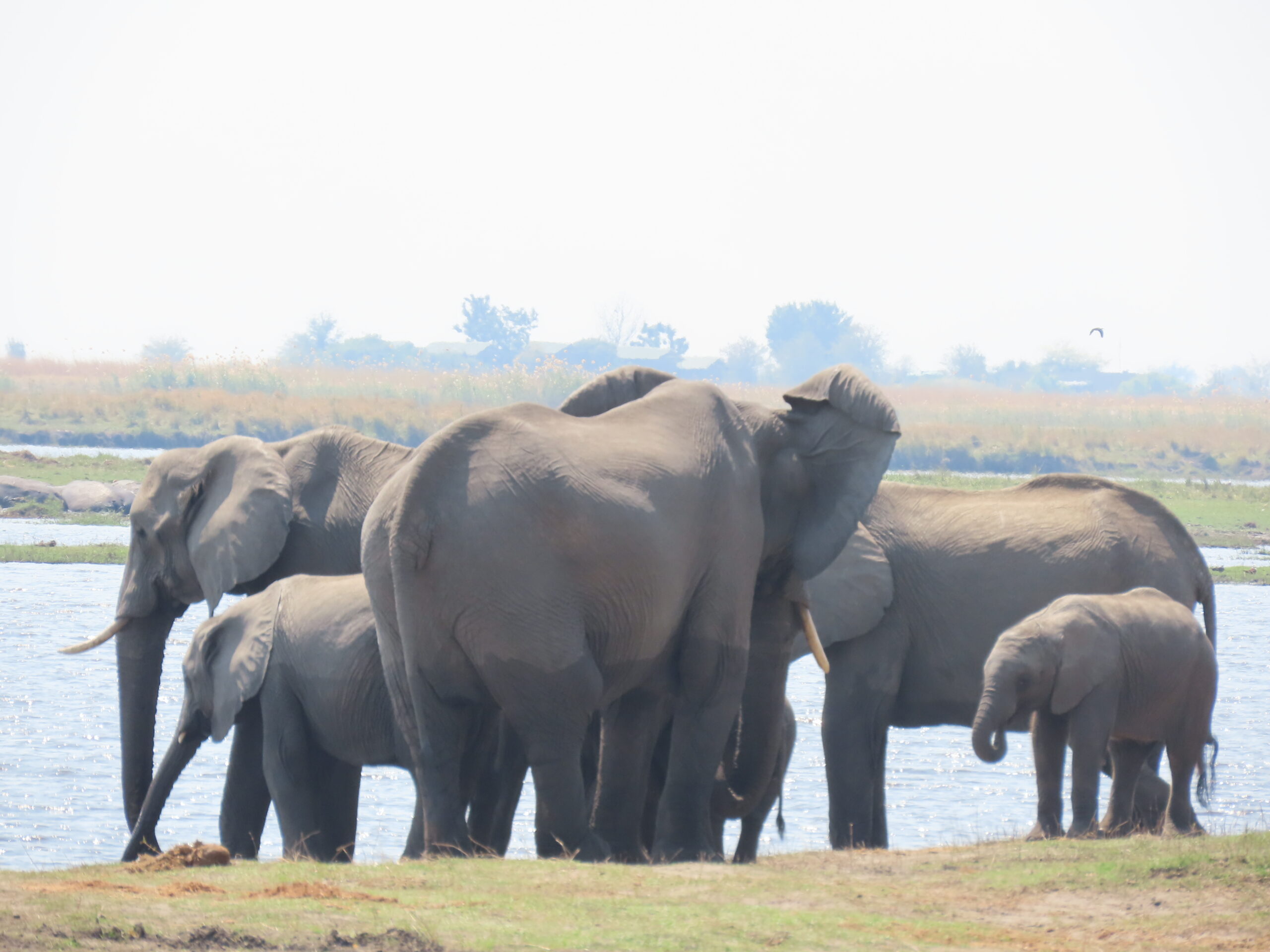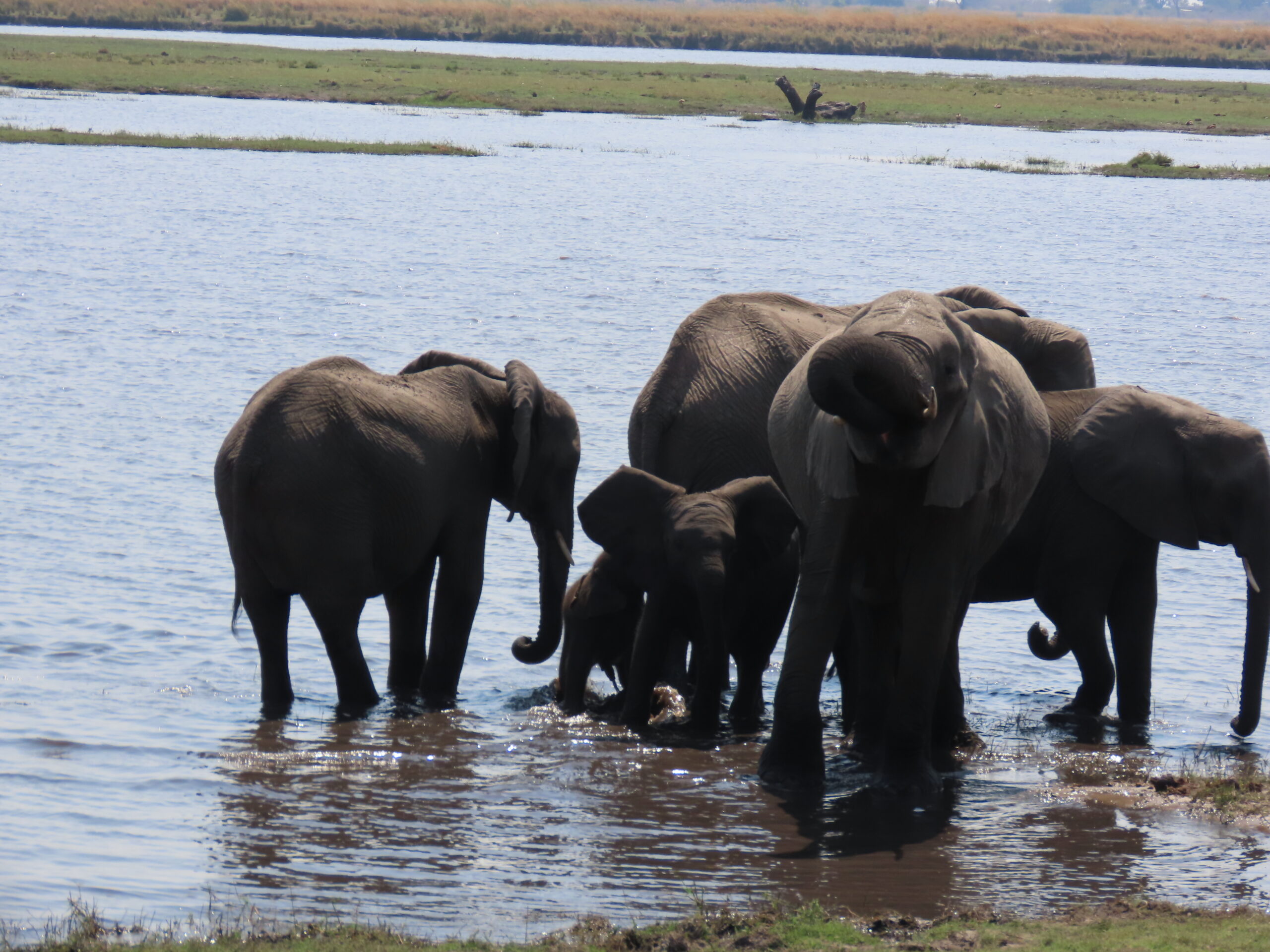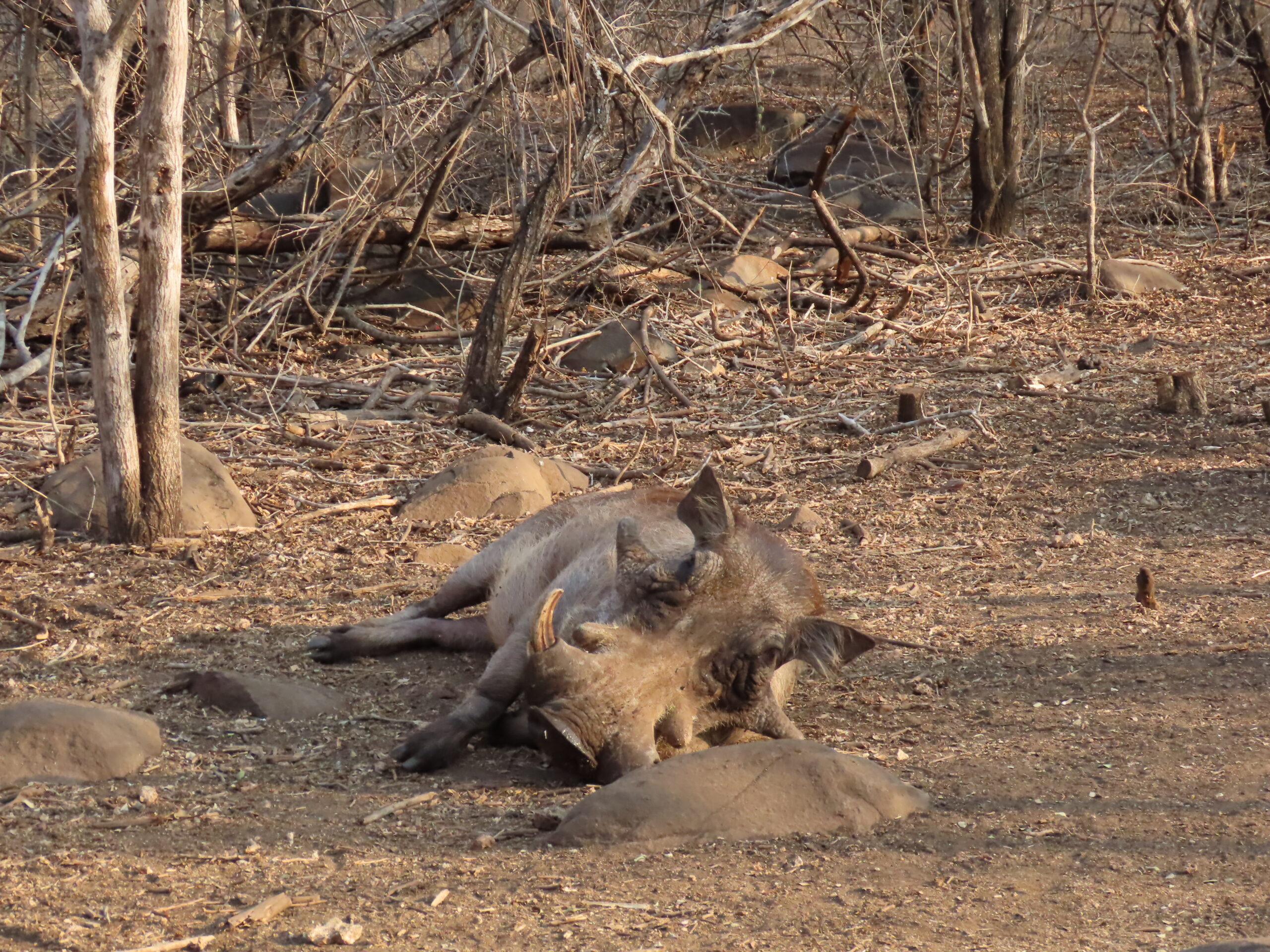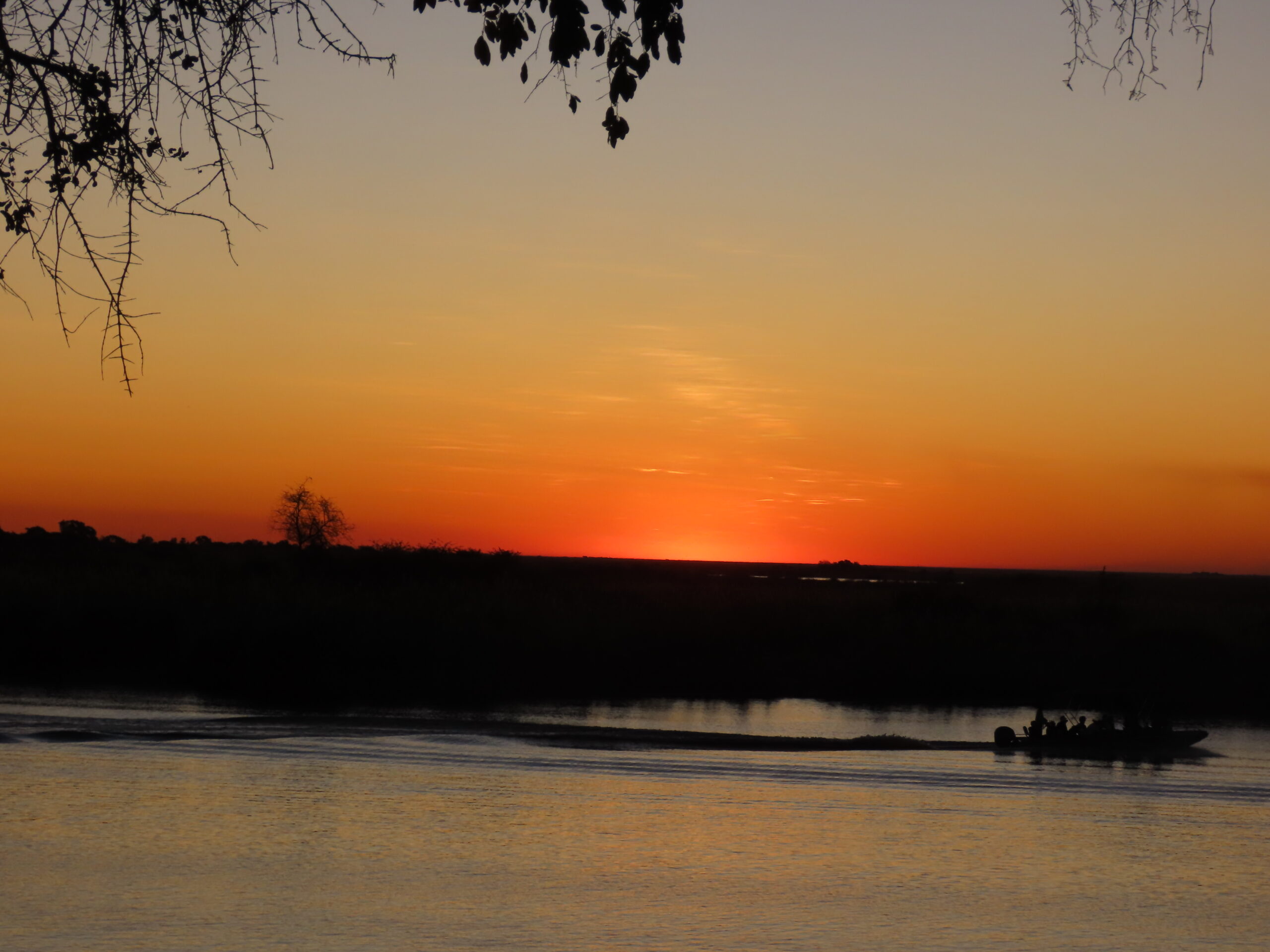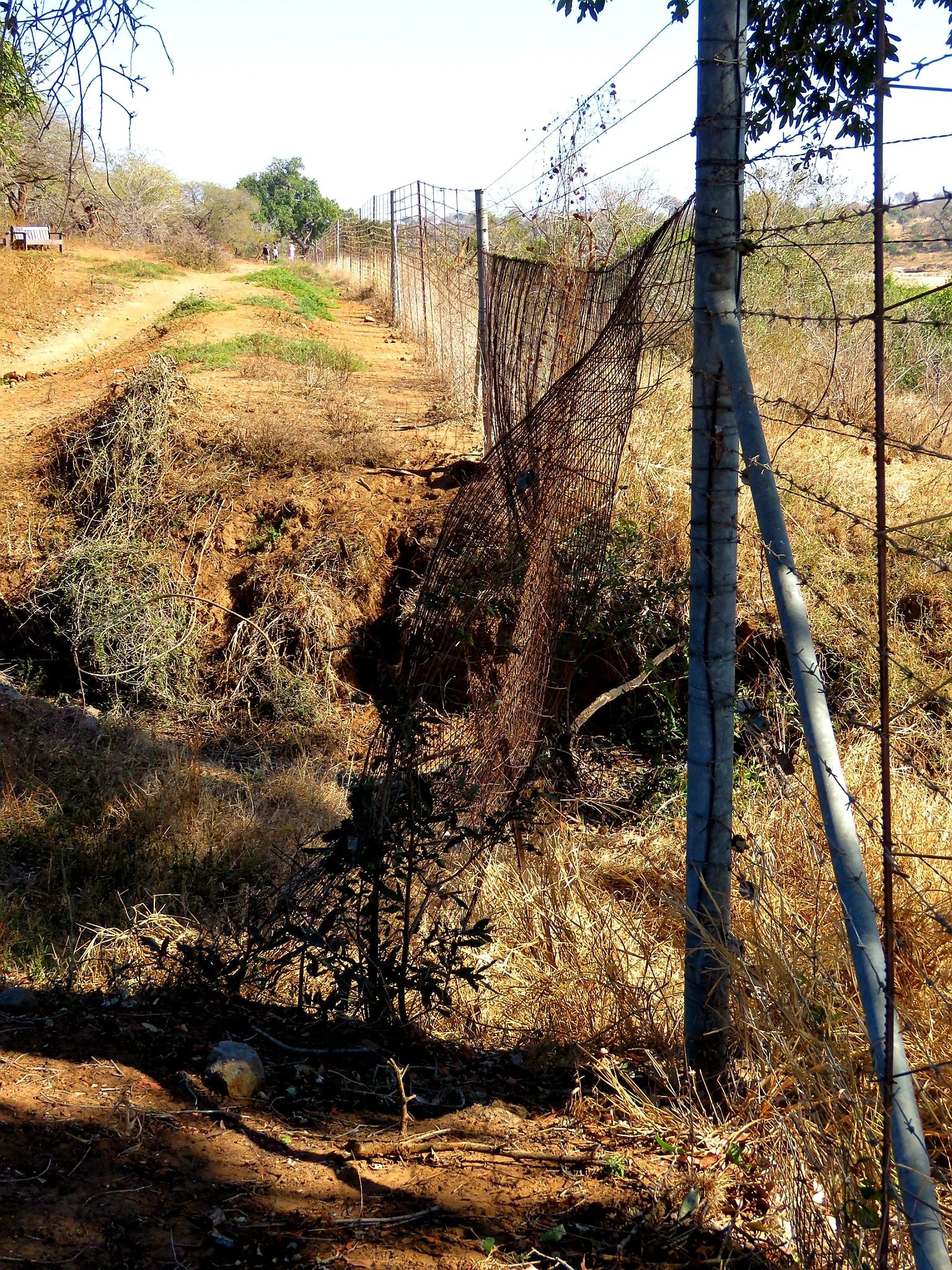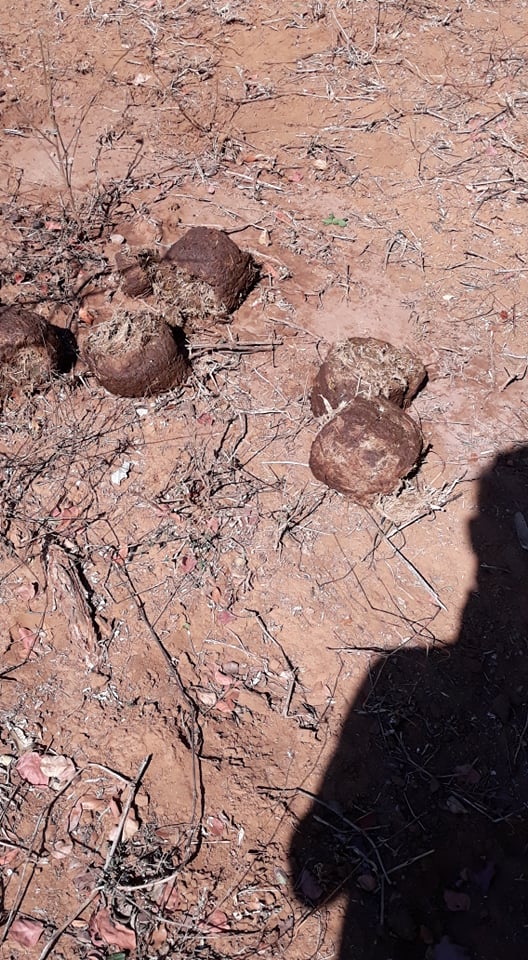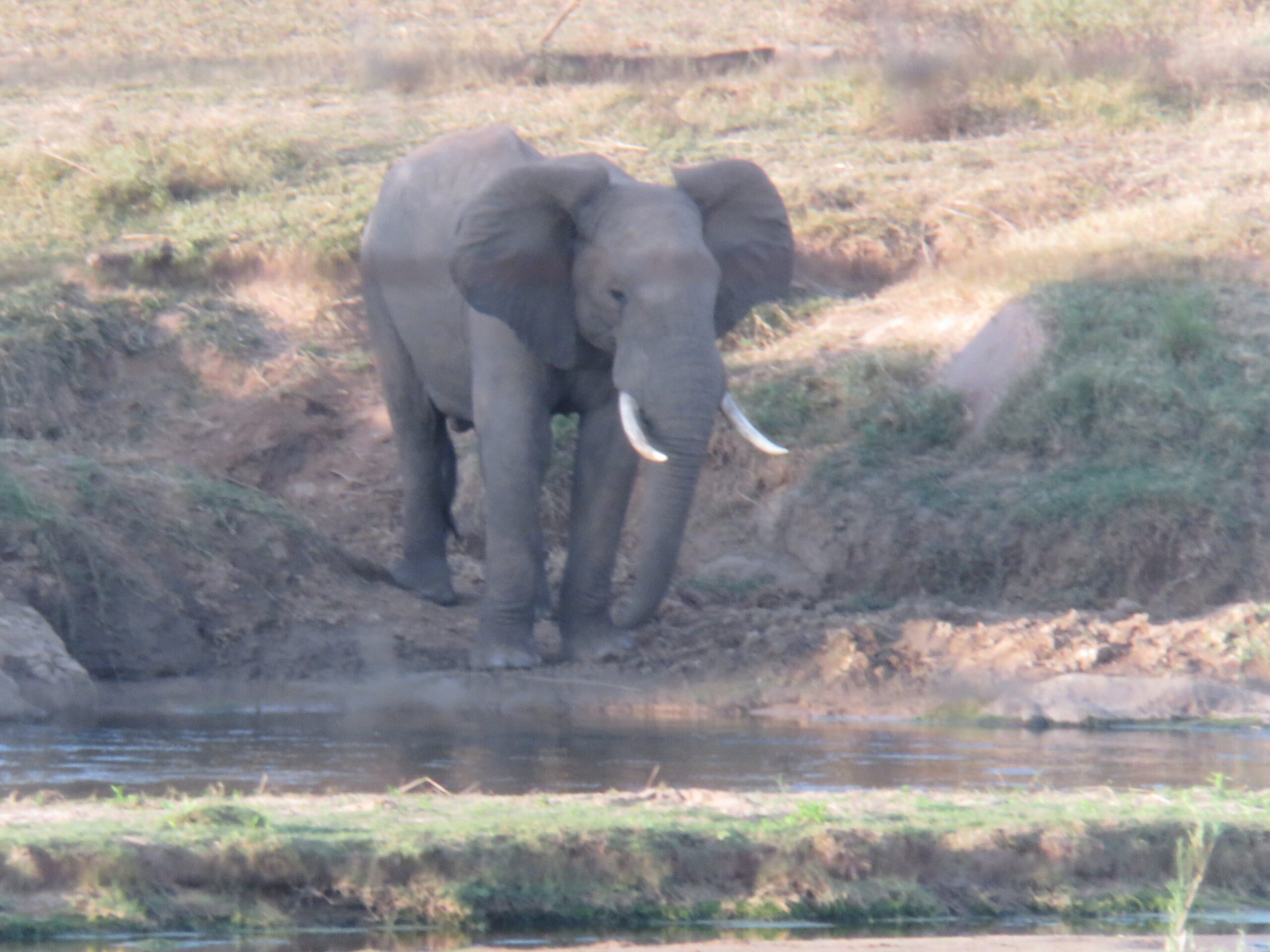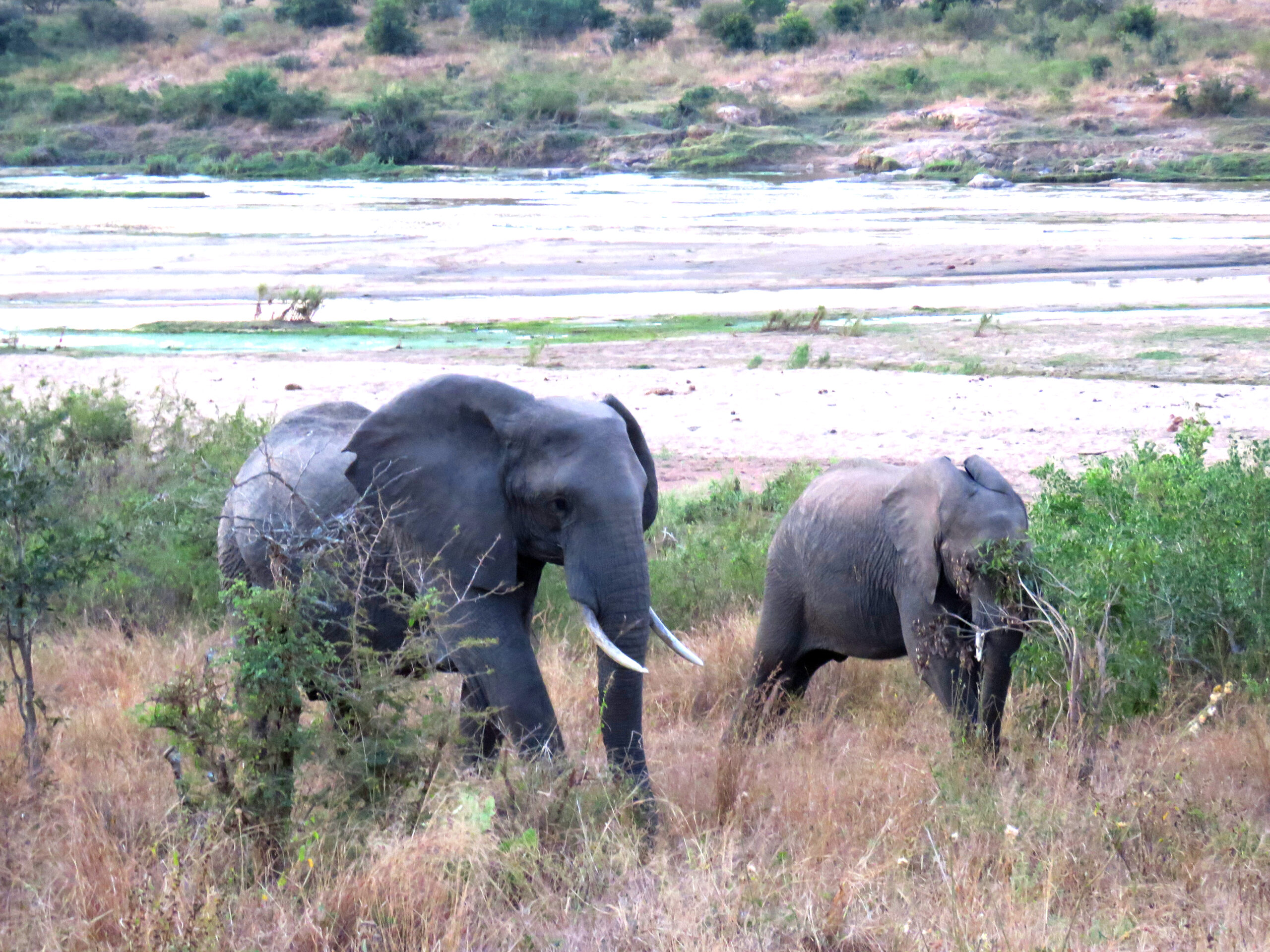
On our return drive to Crocodile Gate on the paved road in Kruger, we thought the sightings were done for the day. Little did we know we’d encounter this precious baby elephant on the road. His mom was grazing on the side of the road and kept a watchful eye on him.

We backed up sufficiently to ensure we didn’t cause the baby or its mom any undue stress. I regret not taking a video, but when he started his antics, we had no idea he’d continue to perform for us. At the time, we were the only vehicle watching this treasure. We didn’t dare move the car to a better position since we thought we’d scare him off. These photos were taken through the windshield.
Baby elephant antics are pure, heart-melting joy! 🐘💕
Picture a tiny elephant — well, tiny for an elephant — with oversized ears flapping like little wings, a curious trunk that doesn’t quite know what it’s doing yet, and an energy level somewhere between a toddler on sugar and a puppy discovering snow for the first time.
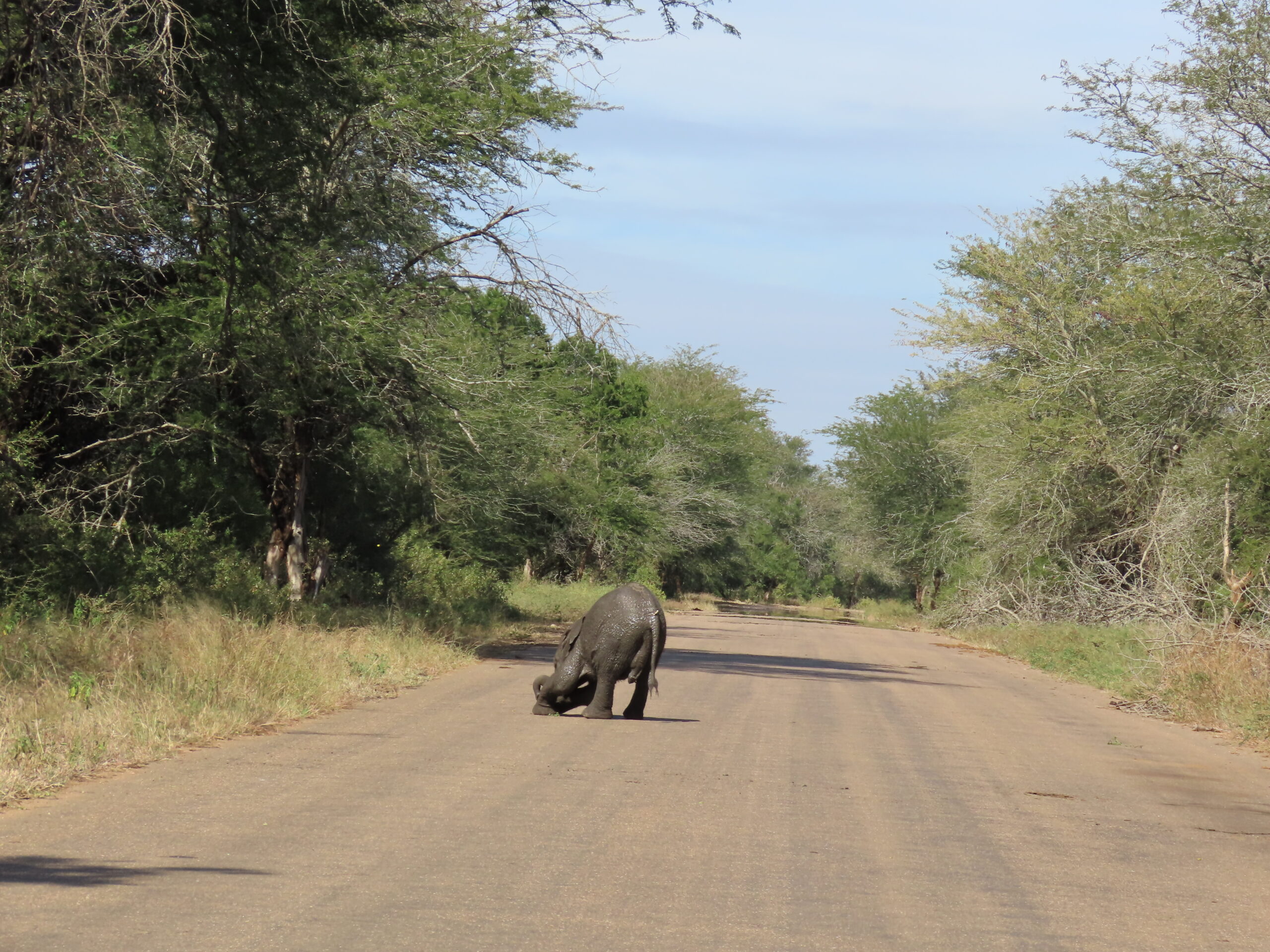
Here are some classic baby elephant antics:
-
Trunk Trouble: Baby elephants often haven’t mastered control of their trunks, so you’ll see them swinging them wildly, tripping over them, or trying to pick something up and missing entirely. Sometimes they accidentally boop themselves on the face or suck it like a thumb.
-
Mud Bath Madness: Mud puddles are the ultimate playground. Calves love to splash, roll, and slide in them — sometimes flopping in with so much gusto they knock over a sibling or get stuck in the slop and need help from mom.

“I am so cute, even when I don’t pose!” -
Play Fighting: Baby elephants practice sparring by head-butting and pushing each other with mock seriousness. Their attempts are often clumsy, followed by running away in exaggerated victory, ears out and tails wagging.
-
Chasing Birds (and Butterflies): They’ll charge after anything that moves — guinea fowl, butterflies, even falling leaves — only to screech to a halt in surprise when it turns around or flutters unexpectedly.
-
Shadow Games: Some have been seen startled by their own shadows or reflections in water, backing up in mock fear before trying again with exaggerated bravery.
After he joined his mom and they both took off into the bush, we continued on our way, unable to wipe the smile off our faces for such a fine day of ‘safari luck.”

One never knows how a game drive in Kruger will turn out. At times, we encounter many amazing sightings, and at other times, there are but a few photo ops. We never regret spending the better part of a day driving through the wildlife wonderland.
Today, we’re doing three loads of laundry, trying to make room on the rack to fit all of it. It’s hard to believe we’ll begin the long journey to the US one week from today. Packing will be easy this time since we will only be gone for three weeks.

Have a lovely weekend.
Be well.
Photo from ten years ago today, May 17, 2015:





